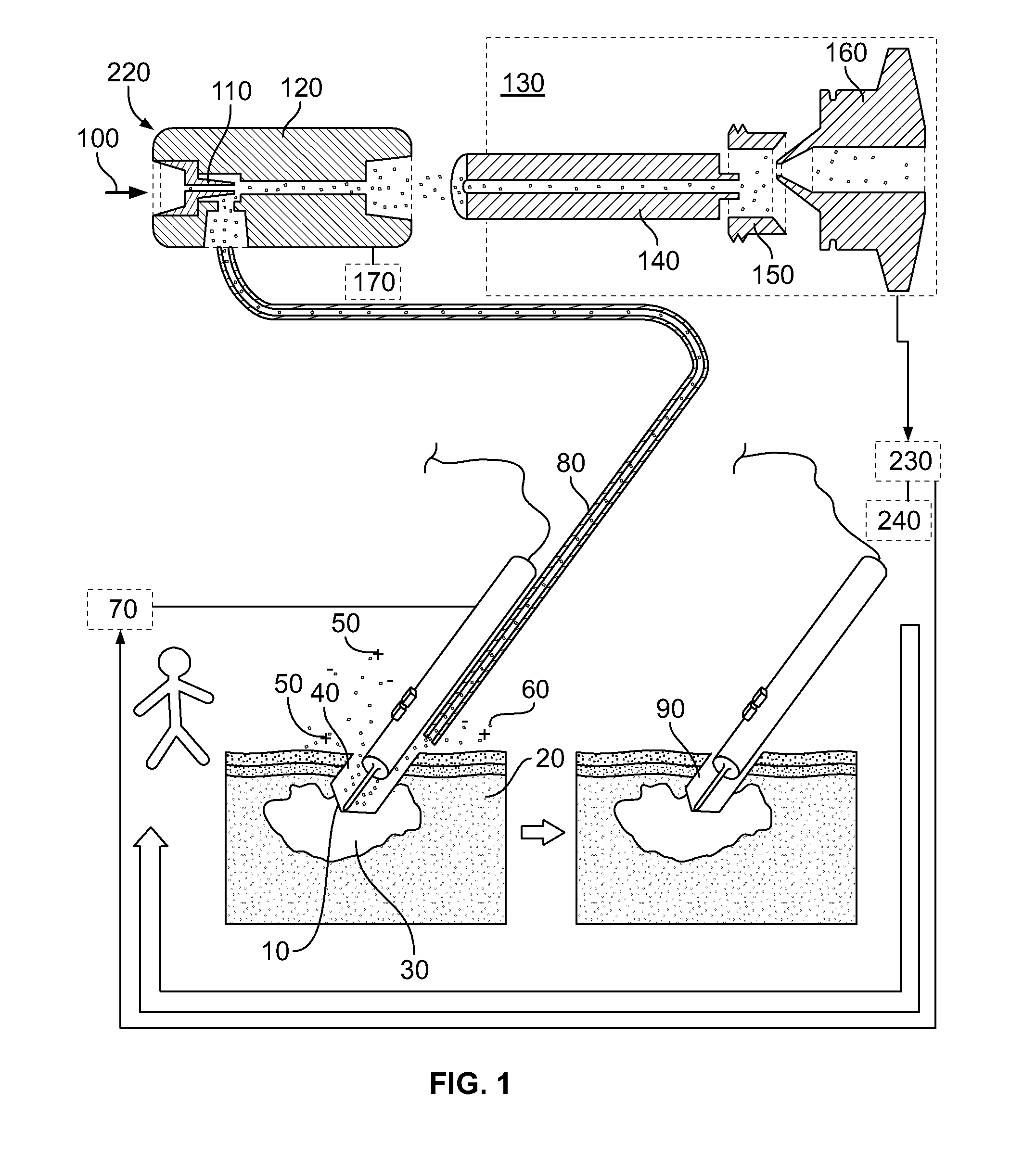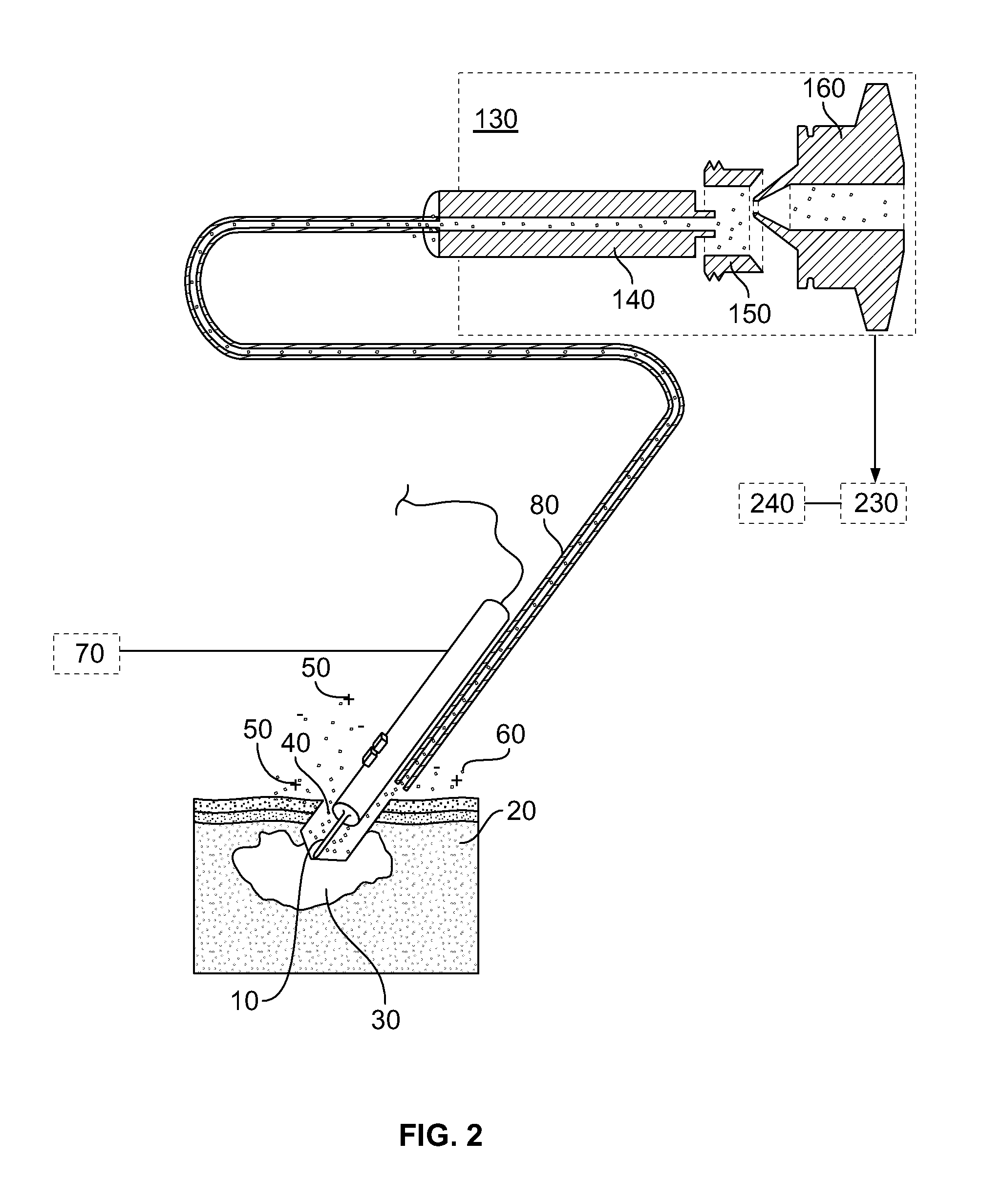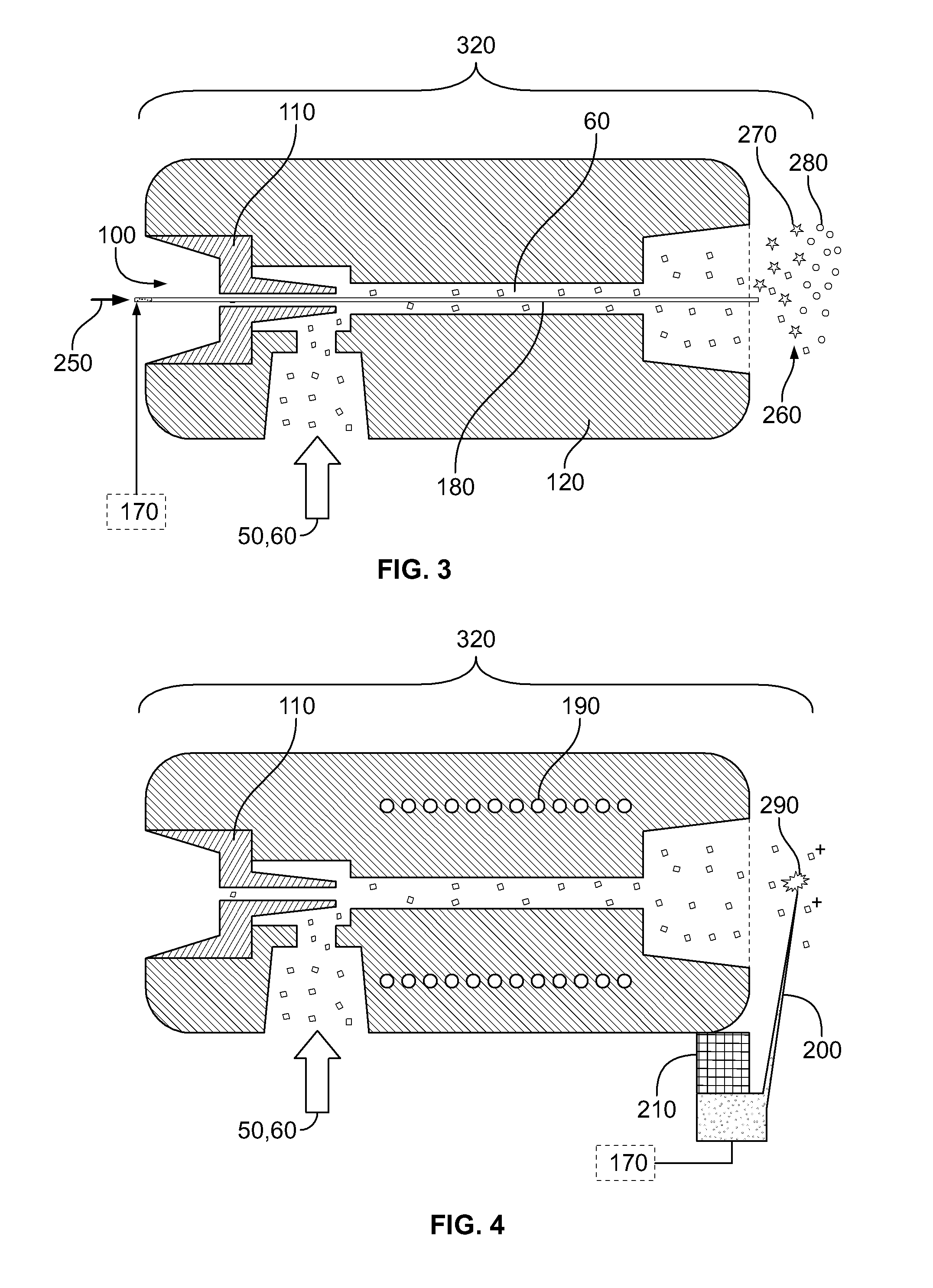System and method for identification of biological tissues
a biological tissue and system technology, applied in the field of biological tissue identification systems and methods, can solve the problems of insufficient information provided by ct, mri, and relatively poor resolution of nuclear imaging techniques, and achieve the effects of reducing the mass of healthy tissues, increasing the detection of tumour spots, and increasing the precision of tissue removal
- Summary
- Abstract
- Description
- Claims
- Application Information
AI Technical Summary
Benefits of technology
Problems solved by technology
Method used
Image
Examples
example 1
Analysis and Identification of Tissue Parts During Surgery
[0114]By reference for example to FIG. 1, an electrosurgical unit (ICC 350, Erbe Elektromedizin GmbH) is used in combination with quadrupole ion trap mass spectrometer (LCQ Duo, ThermoFinnigan). Electrosurgical cutting electrode 10 was equipped with commercially available smoke removal unit 80 (Erbe), which was connected to fluid pump 220 (VAC 100, Veriflo) through 8⅛″ OD 2 mm ID PTFE tubing. Fluid pump 220 was mounted on LCQ instrument using heavily modified DESI ion source (OmniSpray, Prosolia) platform. Mass spectrometer 130 was operated in negative ion mode. Ions in the range of 700-800 were isolated in ion trap, and were activated using collisional activation with neutral helium atoms. Spectra were acquired in range of m / z 700-800.
[0115]Canine in vivo and ex vivo data was acquired from dogs with spontaneous tumours from veterinary oncology praxis.
[0116]Electrosurgical electrode 10 was used to remove malignant melanoma tu...
example 2
Determination of Drugs in Tissues for Localization of Tumour Cells
[0118]An electrosurgical unit (ICC 350, Erbe Elektromedizin GmbH) is used in combination with quadrupole ion trap mass spectrometer (LCQ Duo, ThermoFinnigan). Electrosurgical cutting electrode 10 was equipped with commercially available smoke removal unit 80 (Erbe), which was connected to fluid-pump 220 (VAC 100, Veriflo) through 8⅛″ OD 2 mm ID PTFE tubing. Fluid pump 220 was mounted on LCQ instrument using heavily modified DESI ion source (OmniSpray, Prosolia) platform. Fluid pump 220 was equipped with secondary electrospray post-ionization unit, comprising capillary 180 and high voltage power supply 170. Electrospray 260 and mass spectrometer 130 were operated in positive ion mode. Ions at m / z 447 and 449 were monitored with m / z 446 as background signal.
[0119]Nude mice carrying NCI-H460 human non-small cell lung cancer xenograft were house in a temperature- and light-controlled room, feed and water were supplied ad ...
example 3
Localization and Identification of Bacterial Infections on Mucous Membranes
[0123]Home built thermal tissue disintegration device comprising DC power supply 70 and metal electrodes 10 is used in combination with quadrupole ion trap mass spectrometer (LCQ Duo, ThermoFinnigan). Metal electrodes 10 were connected to fluid pump 220 (VAC 100, Veriflo) through 8⅛″ OD 2 mm ID PTFE tubing. Fluid pump 220 was mounted on LCQ instrument using heavily modified DESI ion source (OmniSpray, Prosolia) platform. Mass spectrometer 130 was operated in negative ion mode. Ions in the range of 640-840 were isolated in ion trap, and were activated using collisional activation with neutral helium atoms. Spectra were acquired in range of m / z 640-840.
[0124]Electrodes 10 were used to sample upper epithelial layer of mucous membranes infected by various bacteria. Since present application of method and device is aimed at minimally invasive analysis of mucous membranes, about 0.1-0.4 mg of total material compris...
PUM
| Property | Measurement | Unit |
|---|---|---|
| thick | aaaaa | aaaaa |
| molecular weight | aaaaa | aaaaa |
| energy | aaaaa | aaaaa |
Abstract
Description
Claims
Application Information
 Login to View More
Login to View More - R&D
- Intellectual Property
- Life Sciences
- Materials
- Tech Scout
- Unparalleled Data Quality
- Higher Quality Content
- 60% Fewer Hallucinations
Browse by: Latest US Patents, China's latest patents, Technical Efficacy Thesaurus, Application Domain, Technology Topic, Popular Technical Reports.
© 2025 PatSnap. All rights reserved.Legal|Privacy policy|Modern Slavery Act Transparency Statement|Sitemap|About US| Contact US: help@patsnap.com



